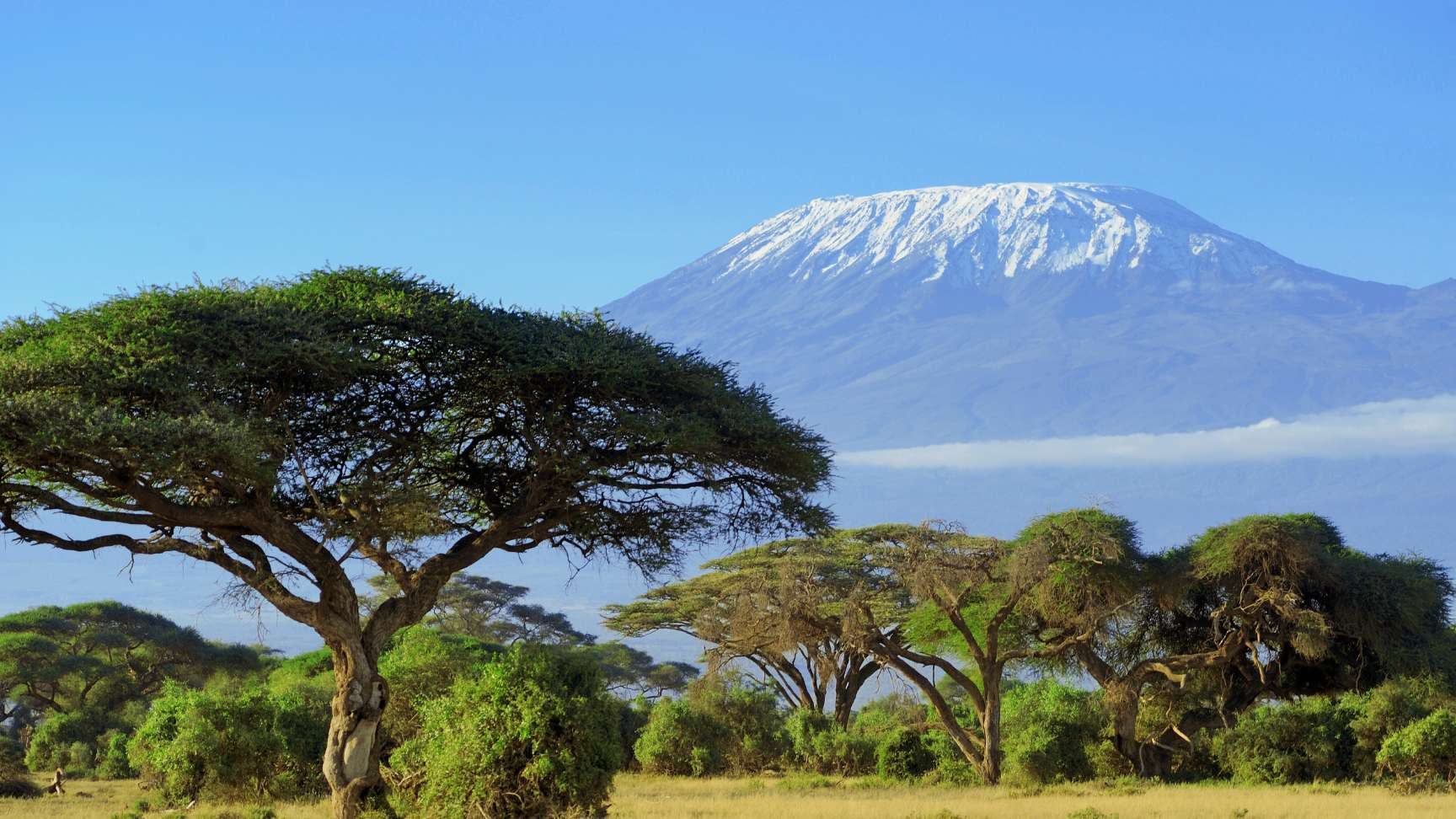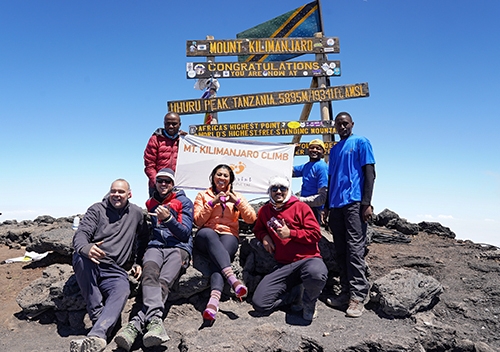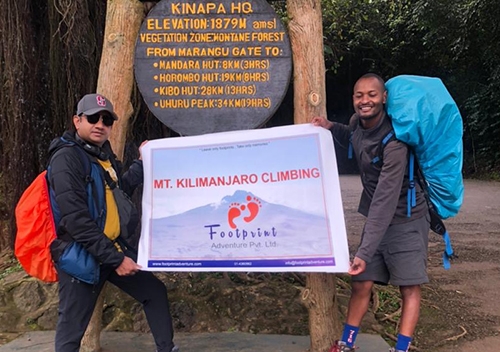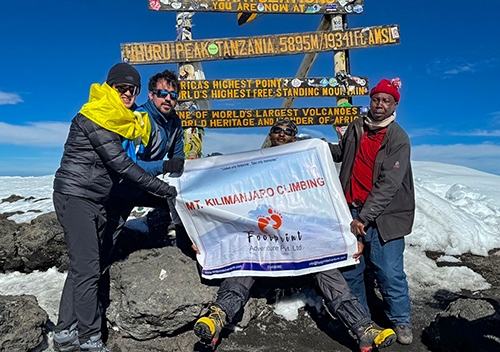Most people who visit Africa immediately associate safaris with beach vacations. These are wonderful experiences, but most forget the best secret: Tanzania's mountains. Not only are the mountains so beautiful to look at, but they also give you an adrenaline-pumping adventure that you cannot have anywhere else. With no idea where to start, it is simple to overlook these fantastic peaks.
But don't worry! We're here to assist you in getting the most out of your trekking Tanzania adventure and ensure you do not miss out on anything. So, if you're thinking of ascending Mount Meru or scaling the peak of Mount Kilimanjaro, let us explore the mountains of Tanzania.
Overview of Tanzania's Mountainous Regions
Tanzania is known for its stunning variety of landscapes, and its mountains are no different. From the Usambara Mountains' rolling green hills to Mt Kilimanjaro's volcanic peaks, the Tanzania mountains blend adventure, nature, and culture.
The nation's mountains possess unique ecosystems, with glaciers, alpine pastures, and tropical rainforests contained within a single landscape. Even the summits are culturally and historically significant, many of them having sacred status with local tribes. For example, Mount Kilimanjaro, the highest African peak, symbolizes adventure for all mountaineers worldwide.
If you plan a trip to Tanzania, you’ll discover each mountain has its unique charm. Whether you’re looking for a challenging trek or a peaceful retreat surrounded by nature, you’ll find it all in the mountains of Tanzania. Click here to learn about top tourist attractions in Tanzania.
Ready to explore the mountains of Tanzania? Start planning your trek today with us (Footprint Adventure).
Top 5 mountains of Tanzania
1. Mount Kilimanjaro: The Continent's High Point
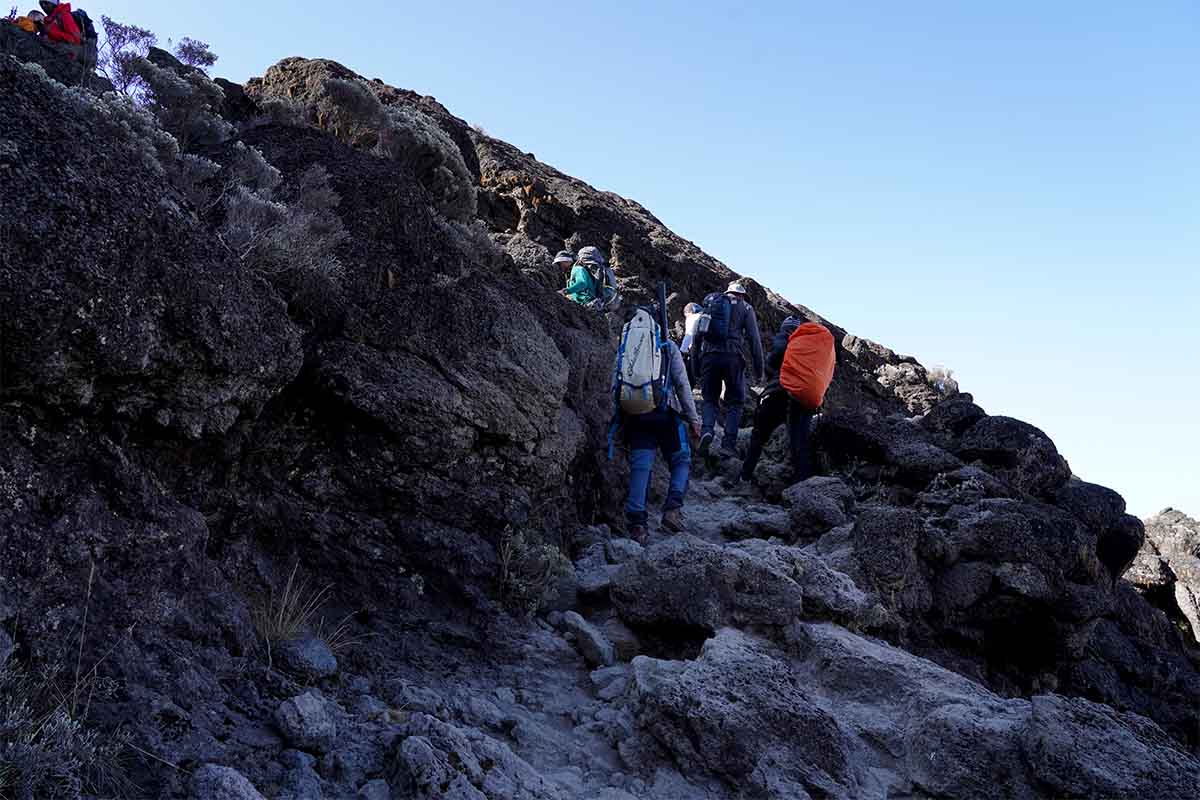
Mount Kilimanjaro is no doubt the world-renowned mountain. With an elevation of 19,341 feet, it is Africa's highest high point and attracts thousands of mountain climbers every year. What explicitly makes Mt Kilimanjaro stand out is not its high elevation but rather the breathtaking spectrum of ecosystems that the climbers encounter while climbing to the top.
The Problem: Climbing Mount Kilimanjaro Can Be Tough
Climbing Mt Kilimanjaro is not an easy task. It is tough because it has a rocky landscape, chilly climate, and is quite high above sea level. Therefore, trekking there will be more difficult. But don't worry, you can still do it! With proper planning and the aid of skilled guides, you can climb this mountain. Learn about the Climate Zone of Mount Kilimanjaro, Click here.
Recommednation Read: Difficulty Level of climbing Mount kilimanjaro
The Solution: Tips for Climbing Mount Kilimanjaro
Here are a few things to consider if you're going to climb Mount Kilimanjaro:
- Take the Right Route: There are several routes to the top, ranging from easy to challenging. Typical routes are Marangu, Machame, and Lemosho. If it's your first time climbing, it's wise to take a more gradual route to aid in acclimatization. For details on route, read our blog "Kilimanjaro Climbing Routes".
- Be Prepared for Altitude: The air is so thin at these high altitudes that breathing is more complicated. Acclimatization is necessary to avoid altitude sickness.
- Hire a Guide: Hiring a guide will make your trek safer and more enjoyable. They’ll know the mountain inside and out and ensure you follow the safest path.
Beginners Guide to Climbing Kilimanjaro: What You Need to Know for Your Adventure
2. Mount Meru: Tanzania's Best-Kept Secret
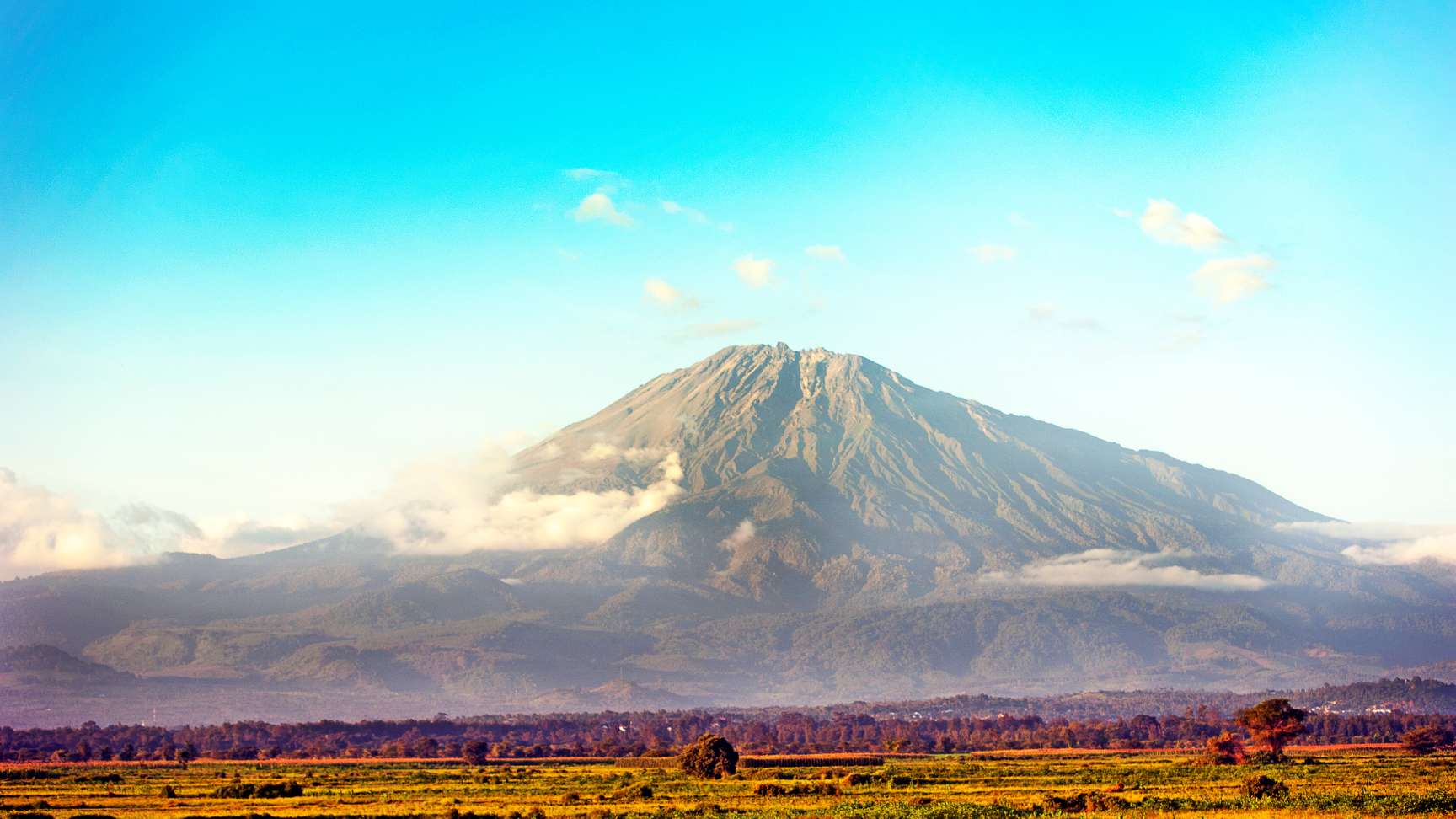
While Mt Kilimanjaro takes center stage, Mount Meru is a best-kept secret with just as exciting an experience, minus the throngs of people. Standing at 14,977 feet, Mount Meru is within a stone's throw of Arusha and, therefore, a perfect trek before or after climbing Mt Kilimanjaro.
Mount Meru is Often Overlooked
Although one of the highest mountains in Tanzania, Mount Meru is less well-known than Mt Kilimanjaro. Certain visitors avoid it, but what a loss! Mount Meru climbing has beautiful views, unique wildlife, and the opportunity to enjoy Tanzania's mountain landscape free from masses of other visitors.
Why You Should Climb Mount Meru
Below are the reasons why you should climb Mount Meru:
- Breathtaking Scenery: From dense forest to rocky ridge, the scenery is stunning.
- Wildlife Sights: The mountain lies in Arusha National Park, so you will get to spot animals like giraffes, buffalo, and monkeys along the way.
- A Stepping Stone to Kilimanjaro: If scaling Mt Kilimanjaro is on your agenda, scaling Mount Meru is the perfect way of building endurance and acclimatizing to high altitude before embarking on the big one.
Don't miss an opportunity to hike Mount Meru! Book today and get to know this lovely mountain before tackling Mt Kilimanjaro.
3. The Usambara Mountains: The Green Heart of Tanzania
Tanzania's northeastern region features the green, lush Usambara Mountains. While more known peaks like Mt Kilimanjaro are congested and favored, the mountains are less famous and less congested, and they offer an excellent escape for nature lovers and those who just want a quiet retreat.
The Problem: Usambara Mountain Hidden Treasures
Although the Usambara Mountains are breathtaking, they take a back seat to more significant and more prominent mountains like Mt Kilimanjaro. Thus, most visitors end up missing the opportunity to discover this natural wonder.
The Solution: Travel to the Usambara Mountains
The Usambara Mountains have in store:
- Quiet Treks: The trails here are not so demanding and perfect for people who want an easy experience.
- Rich Biodiversity: The region is home to hundreds of species of birds, plants, and animals, making it a haven for nature lovers.
- Cultural Encounters: Along the way, you’ll have the chance to interact with local communities who live in the mountains.
4. The Rwenzori Mountains: Uganda-Tanzania Border
The Rwenzori Mountains, spanning the border of Tanzania and Uganda, are two of the most striking and remotest ranges of mountains in all of Africa. Alternately called the "Mountains of the Moon," the Rwenzoris support glaciers, snowy peaks, and dense rain forests.
The Problem: Isolated and Difficult Country
The Rwenzori Mountains are not as popular as Mt Kilimanjaro, but they offer one of the most challenging and rewarding treks in Africa. The terrain is rocky, and the climb is difficult, so it's a destination for serious adventurers.
The Solution: Tame the Rwenzoris
Here's what you can expect to see in the Rwenzori Mountains:
- Glaciers and Waterfalls: The Rwenzori trek is famous for glaciers, waterfalls, and stunning views.
- Challenging Terrain: This is not an easy trek, but if you're looking for a serious adventure, the Rwenzoris won't disappoint.
Ready for a challenge? Plan your Rwenzori trek now and explore one of Africa’s most remote and beautiful mountain ranges!
5. Mount Oldoinyo Lengai: Tanzania's Active Volcano
Tired of boring trekking activities? Mount Oldoinyo Lengai, also referred to as the "Mountain of God" by locals, is ready for you. This active volcano is 9,442 feet high and constitutes one of Tanzania's most exciting climbs.
Why Climb Mount Oldoinyo Lengai?
- The Lava: This is unlike any other volcano as it spews carbonatite lava, which is cooler and black in colour instead of red.
- Breathtaking Scenery: The trek up the mountain is surrounded by extraordinary scenery of the Rift Valley and Lake Natron.
- A True Test: This is a challenging and steep hike, perfect for adventurous people.
Need an out-of-the-world trek? Book a Mount Oldoinyo Lengai climb and experience the adventure of ascending an active volcano!
Best Time to Visit Tanazani’s Mountains
For every journey, trekking is everything, and the same situation applies when exploring the mountains of Tanzania. It depends upon you when is the best time to visit Tanzania, depending upon the kind of experience you’re looking for. Tanzania has two seasons: the dry and wet season.
- June to October (Dry Season): This is the best time to climb Mt Kilimanjaro and Mount Meru. The trails are not wet, the sky is blue, and the views are simply spectacular. This is also tourist high season, so be prepared to see more hikers on the trails.
- December to March: Another significant period to climb Mount Kilimanjaro and Mount Meru. It's a bit warmer, making the climb more comfortable, but occasionally, there are showers.
- March to May (Rainy Season): This is the worst time to trek because heavy rains cause muddy and slippery paths. But if you enjoy being alone and don't mind the effort, you will see fewer visitors during this period.
- Usambara Mountains & Udzungwa Mountains: They can be visited at any time of the year, but June-October is the best time for hiking, birdwatching, and trekking.
- Mount Oldoinyo Lengai: It is better to climb during the dry season (June-October) as the wet slopes are slippery.
- Rwenzori Mountains: The mountains have unpredictable weather, but the best climbing conditions are from January to February and June to August.
Now it depends upon what kind of weather you want to experience. If you enjoy cooler weather and hate the crowds, then visiting in seasons (March-May or November) will be perfect. But make sure to check the weather forecast and prepare for shifting conditions depending on how high up your trekking point is.
Conclusion
Tanzania's mountains have stunning landscapes. They are portals to adventure, culture, and breathtaking views. You may imagine ascending the snowcapped summit of Mount Kilimanjaro, trekking along the rocky ridges of Mount Meru, or experiencing the raw fury of Mount Oldoinyo Lengai. Whatever your desire, there is a mountain experience awaiting you. Each of these mountains provides extraordinary wildlife, rich diversity of ecosystems, and once-in-a-lifetime trekking experiences that are difficult to find on our planet.
How Dangerous Is Climbing Kilimanjaro? Understanding the Risks and Staying Safe
Regardless of what your level of experience is, there is a Tanzania mountains experience waiting to be found by you. For the experienced climber and the beginning hiker alike, these untamed peaks offer challenge, loveliness, and an adventure of a lifetime with nature. So why not? Begin making plans for your trekking Tanzania experience today, and become a part of the adventure of a lifetime!
FAQs
What is the highest mountain in Tanzania?
The highest mountain in Tanzania is Mount Kilimanjaro, standing tall at 19,341 feet (5,895 meters). It’s the tallest free-standing mountain in the world and one of the most iconic peaks to climb. With its breathtaking glaciers, diverse ecosystems, and stunning summit views, Kilimanjaro is a bucket-list destination for adventurers like me.
How difficult is climbing Mount Kilimanjaro?
Climbing Mount Kilimanjaro is definitely challenging, but it doesn’t require technical climbing skills. The biggest difficulty comes from the high altitude, which can cause altitude sickness. However, with proper acclimatization, a steady pace, and a good guide, reaching the summit is achievable—even for those with little trekking experience.
What is the best time to trek Tanzania’s mountains?
From my experience, the best time to trek in Tanzania is June to October and December to March. These months offer the most stable weather, with clear skies and comfortable temperatures. If I had to choose, I’d say January and February are ideal for great views, while August and September offer drier conditions, perfect for climbing.
How long does it take to climb Mount Meru?
Climbing Mount Meru usually takes 3 to 4 days, depending on the chosen route and pace. It’s a fantastic warm-up for Kilimanjaro and offers incredible wildlife encounters as the trek begins in Arusha National Park. The scenic views from the summit are absolutely worth the effort!
Is Mount Oldoinyo Lengai an active volcano?
Yes, a permit is required to climb most of Tanzania’s mountains, especially Mount Kilimanjaro and Mount Meru. The fees contribute to conservation efforts and park maintenance. I always make sure to arrange permits in advance through tour operators or national park offices.
Do I need a permit to climb Tanzania’s mountains?
Yes, a permit is required to climb most of Tanzania’s mountains, especially Mount Kilimanjaro and Mount Meru. The fees contribute to conservation efforts and park maintenance. I always make sure to arrange permits in advance through tour operators or national park offices.
Are there beginner-friendly trekking routes?
Absolutely! If you’re new to trekking, I’d recommend the Usambara Mountains or some easier routes on Mount Meru. These trails are scenic and less demanding, making them great for beginners who want to experience Tanzania’s breathtaking landscapes without extreme altitude challenges.
Can I climb Tanzania’s mountains solo?
Some mountains, like those in the Usambara or Pare ranges, allow solo hiking. However, Mount Kilimanjaro requires a licensed guide—it’s mandatory for safety reasons. Personally, I prefer having a guide even on solo-friendly mountains because they provide valuable local knowledge and enhance the overall experience.
What wildlife can I see in these mountains?
One of my favorite things about trekking in Tanzania is the incredible wildlife encounters! Depending on the location, you might spot Colobus monkeys, blue monkeys, elephants, buffaloes, and even leopards. There are also plenty of rare and colorful birds, making it a paradise for birdwatchers like me.
Is travel insurance necessary for trekking?
While travel insurance isn’t mandatory, I strongly recommend it. Trekking in remote areas comes with risks like altitude sickness, injuries, or unexpected trip cancellations. I always make sure my insurance covers high-altitude trekking and emergency evacuations—better safe than sorry!
